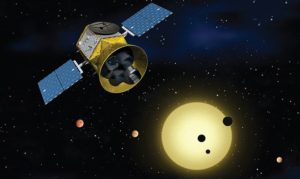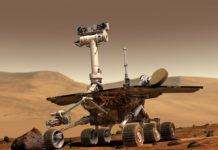 Did you know that no launch of any satellite, spaceship, extraterrestrial rover, or other object intended to be launched out of planet Earth’s atmosphere has even been set in stone?
Did you know that no launch of any satellite, spaceship, extraterrestrial rover, or other object intended to be launched out of planet Earth’s atmosphere has even been set in stone?
Considering that the largest obstacle – barrier, if you will – between rockets on the surface of planet Earth and deep space or low-Earth orbit is, in fact, weather and other meteorological conditions, every single rocket launch never gets clearance for the infamous full-systems go instruction from ground control until just seconds before spaceflight is attempted?
Well, if you didn’t already know, now you do.
Again, as mentioned above, uncontrollable weather patterns can – and regularly do – postpone the launching of Earth’s productions into outer space.
However, NASA announced just a few minutes ago that its brand-new, super-expensive – as always; I guess space is pretty unforgiving, after all… it’s not like government agencies, or even highly-successful private companies like SpaceX can just magically deploy construction workers to space to repair satellites, rovers, telescopes, and anything else launched into space – TESS, short for the Transiting Exoplanet Survey Satellite, is most likely going to be launched into deep space – well, technically, it will orbit around planet Earth, just in a very, very long, elliptical orbit, unlike evey other satellite floating around in low-Earth orbit – where it will hopefully detect exoplanets beyond the reaches of the Milky Way galaxy.
TESS will, in fact, be able to make discoveries otherwise not possible from either Earth’s surface or via satellites spinning around the third rock from the Sun in planet Earth’s low-Earth orbit, currently populated by thousands of satellites.
The satellite will be able to detect exoplanets when the brightness of fiery, burning stars – they’re identical in composition to the Milky Way’s one and only Sun, except most of them are far, far larger – dips down by nearly-undetectable readings, which can only be caused by planets and other space debris moving in front of such fiery stars.
According to NASA’s and SpaceX’s high-ranking scientific officials, TESS could end up spotting thousands of planets never before seen from planet Earth. The two groups’ collective goal is to hopefully identify worlds that could potentially host human life.
NASA’s development is slated to be blasted off into the atmosphere and far beyond via a Falcon 9 rocket, produced by none other than SpaceX itself.





